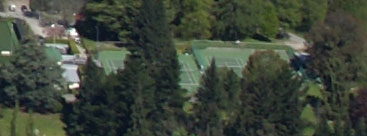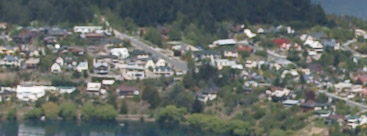Sony Alpha DSLR-A700 final production review
-
-
Written by Gordon Laing
Outdoor scene - Sony Alpha DSLR-A700 vs Canon EOS 40D
It’s immediately clear from the crops below that using their default JPEG settings, the Canon EOS 40D is applying greater sharpening than the Sony A700. The Sony crops appear noticeably softer in comparison, but if you increase the in-camera sharpening or apply sharpening through software later, the results can look very similar. It’s interesting given Sony’s reputation for vibrant image processing to opt for a somewhat toned-down approach on the A700, perhaps targeting more serious photographers who expect to post-process.
 As for actual detail captured, the Sony A700 enjoys a very slight edge here at its lowest sensitivity, but it makes very little difference in real-life situations like these. The difference is measurable though as we’ll show in our A700 studio resolution results, but before heading there, scroll to the bottom of the page to check out a sample crop converted from a RAW file. |
Sony Alpha DSLR-A700 with Sony DT 16-80mm at 25mm |
Canon EOS 40D with Canon EF 24-105mm at 24mm | |
 | ||
f8, 100 ISO |
f8, 100 ISO | |
 |  | |
f8, 100 ISO |
f8, 100 ISO | |
 |  | |
f8, 100 ISO |
f8, 100 ISO | |
 |  | |
f8, 100 ISO |
f8, 100 ISO |
Sony Alpha DSLR-A700: JPEG versus RAW
We photographed the scene here in Large Fine JPEG + RAW mode and have presented crops below from each file for comparison. The RAW file was converted using Sony’s supplied Image Data Converter SR (updated to version 2.0) using the default settings, then sent to Photoshop in 16 bits. This was then reduced to 8 bits and processed the same way as the original JPEG for presentation here.
 The RAW file processed using the default settings appears little different to the JPEG, although is a little sharper. Of course the benefit of shooting in RAW is having greater latitude to make adjustments, and Sony’s supplied software gives you plenty of options including the ability to apply the D-Range optimiser, adjust the noise reduction and fine-tune sharpening. If you’re willing to tweak, it’s possible to achieve what most would consider to be far superior results. Now let’s look at the A700’s resolution. |
Sony Alpha DSLR-A700 JPEG with Sony DT 16-80mm at 25mm |
Sony Alpha DSLR-A700 RAW with Sony DT 16-80mm at 25mm | |
 | ||
f8, 100 ISO |
f8, 100 ISO |
Sony Alpha DSLR-A700 results continued…
|





